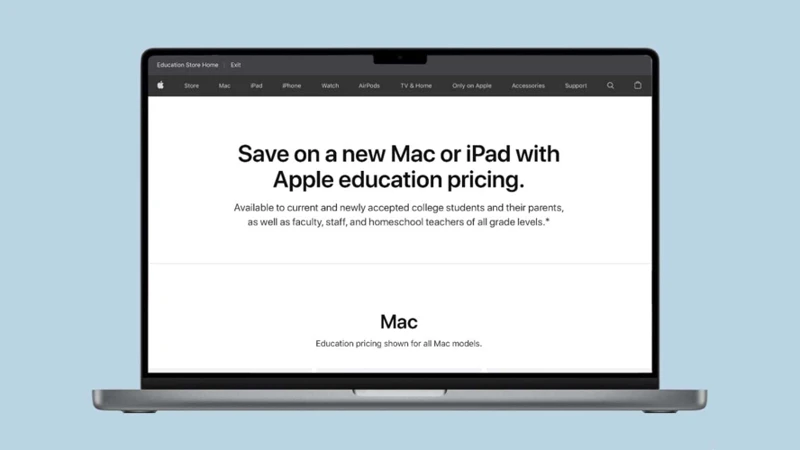Streamlining the Student Verification Process with Digital Platforms
In today’s digital age, where efficiency and convenience are paramount, traditional methods of student verification can be time-consuming and prone to errors. However, with the advent of digital verification platforms, educational institutions and businesses can now streamline the verification process, ensuring accurate identification of students while maintaining their privacy. This article explores the limitations of .edu college student verification and highlights the benefits of digital verification, including a streamlined and privacy-friendly process. Additionally, we will delve into the cost-saving advantages of automating the verification process and how it can enhance conversions and the overall shopping experience. By leveraging these digital platforms, educational institutions and businesses can improve their operations, build trust, and create a more personalized engagement with their student customers.
Contents
The Limitations of .edu College Student Verification

The limitations of .edu college student verification pose significant challenges for brands and educational institutions. The exclusivity and perceived value of student offers are eroded when it is easy for individuals to obtain fake .edu addresses and access discounts meant for students. This not only reflects negatively on the brand but also results in potential revenue loss. Relying solely on .edu email verification limits the reach of these offers, as many students are not issued a .edu address. Additionally, discount abuse is prevalent, with one in five adults using an .edu email address to redeem student offers even after graduating. These statistics, coupled with the fact that discount abuse can be as high as 35%, raise serious concerns for brands seeking to tap into the college student market. To overcome these limitations, digital verification offers a solution by ensuring that only valid students can redeem exclusive offers, protecting margins and extending offers to non-.edu students. By implementing a streamlined and privacy-friendly process, brands can enhance the verification process, prevent abuse, and build long-term relationships with students.
1.1 Discount Abuse Prevention
Discount abuse prevention is a crucial aspect of student verification processes. It aims to combat fraudulent activities and ensure that discounts are utilized by eligible students only. Traditional methods of discount verification, such as presenting a student ID at the point of purchase, have proven to be susceptible to abuse.
Digital platforms offer a more secure and efficient solution to prevent discount abuse. By implementing digital verification systems, businesses can validate the authenticity of a student’s identity and enrollment status. This helps to minimize the risk of individuals using forged identification or claiming enrollment that they are not entitled to.
One of the key advantages of digital verification is the ability to detect and prevent identity fraud. With the use of advanced technology, these platforms can cross-reference the provided information with reliable databases to verify the legitimacy of a student’s identity. This helps to combat situations where individuals use falsified proof of identity, such as forged driver’s licenses or passports associated with a different person.
Digital verification platforms can also detect enrollment repudiation, where a student denies their enrollment with the educational institution. By cross-referencing enrollment records and verifying with the student, businesses can ensure that only genuine students are availing the discounts.
By implementing robust discount abuse prevention measures through digital verification platforms, businesses can protect their student discount programs from exploitation. This not only safeguards the integrity of the discount system but also ensures that discounts are rightfully enjoyed by eligible students.
To learn more about how digital verification helps prevent offer abuse, you can read our article on how digital verification helps prevent offer abuse.
1.2 Extending Offers to Non-.edu Students
When it comes to offering exclusive discounts and promotions to college students, relying solely on .edu email addresses can be limiting. Not all students have a .edu email address, especially international students who make up a significant portion of the student population.
In fact, a staggering 76% of international students use common email domains like Gmail or Yahoo, making it difficult to verify their eligibility for exclusive offers. By exclusively targeting .edu email addresses, businesses are potentially missing out on a massive customer base of over 124 million potential customers.
Relying on .edu email verification can lead to offer abandonment. Students are required to leave the website, access their email inbox, retrieve the verification email, and then return to complete the purchase process. This cumbersome process can deter students from taking advantage of the offer, resulting in missed opportunities for businesses.
Additionally, using .edu email verification erodes the integrity of the offer. The exclusivity and perceived value of the offer diminish when students can easily obtain it using fake .edu addresses. This not only reflects negatively on the brand but also hampers long-term loyalty.
To overcome these limitations, digital verification platforms offer a solution. With digital verification, businesses can ensure that only valid students can redeem exclusive offers, protecting their margins from discount abuse. Digital verification allows businesses to extend their offers to non-.edu students, tapping into a wider audience and maximizing revenue potential.
By adopting a streamlined and privacy-friendly process offered by digital verification platforms like SheerID, businesses can capture and retain high-value customers from lucrative segments such as students. The power of gated, exclusive offers lies in their attractiveness and personal engagement. Digital verification helps maintain the exclusivity of the offer, enhancing brand reputation and fostering long-term relationships with students.
Extending offers to non-.edu students through digital verification is crucial for businesses looking to tap into the vast student market. By leveraging digital platforms, businesses can overcome the limitations of .edu college student verification, prevent discount abuse, and create a more personalized and inclusive engagement with students. This not only boosts revenue potential but also helps build trust and loyalty among student customers.
To learn more about the advantages of digital verification for student discounts and how it can benefit businesses, you can visit this link: [Advantages of Digital Verification for Student Discount Programs](/advantages-digital-verification-student-discount/).
The Benefits of Digital Verification

The Benefits of Digital Verification:
Digital verification offers numerous benefits for both educational institutions and businesses. One of the key advantages is the streamlined and privacy-friendly process it provides. With digital verification platforms, students can be instantly verified as part of the purchase process, without having to leave the website. This eliminates the need for time-consuming email loops and ensures a smooth and efficient verification experience. Additionally, digital verification allows for the collection of valuable data for marketing efforts. By gathering minimal information such as date of birth and school attended, businesses can better understand their student customer base and tailor their marketing strategies accordingly.
Digital verification helps to protect student discounts and prevent discount abuse. By verifying the eligibility of students, businesses can ensure that only valid students can redeem exclusive offers, preventing unauthorized individuals from taking advantage of discounts meant for students. This protects the margins of businesses and maintains the perceived value and exclusivity of student offers, which in turn enhances long-term loyalty and brand reputation.
Digital verification extends the reach of student offers beyond just .edu students. By enabling verification based on a minimal amount of data, such as date of birth and school attended, businesses can extend their offers to non-.edu students who may still have a strong desire to buy from them. This expands the potential customer base and increases the likelihood of conversion.
The benefits of digital verification are significant. It offers a streamlined and privacy-friendly process, protects student discounts, extends offers to non-.edu students, and enables data collection for targeted marketing efforts. By leveraging digital verification, educational institutions and businesses can build trust, enhance conversions, and create long-term relationships with their student customers.
Link: /benefits-student-discount-programs/
2.1 Streamlined and Privacy-Friendly Process
When it comes to student verification, a streamlined and privacy-friendly process is crucial. Digital verification platforms offer a solution that simplifies and accelerates the verification process while ensuring the privacy of students’ personal information.
With traditional methods of verification, such as manual document checks or email loops, the process can be time-consuming and prone to errors. Digital verification eliminates these inefficiencies by allowing students to provide a minimal amount of data, such as their date of birth and the school they are attending, directly on your website. This information is instantly verified, without the need for students to leave your website or go through a lengthy verification process.
By implementing a digital verification platform, you can offer a seamless and hassle-free experience for your students. They can easily verify their student status and access exclusive discounts or offers without any unnecessary delays or complications.
Digital verification platforms prioritize the privacy of students’ personal information. The data provided by students is securely encrypted and stored in a centralized database, ensuring that their information is protected from unauthorized access. This not only instills confidence in your students but also helps you comply with privacy regulations and build trust with your customer base.
A streamlined and privacy-friendly process is essential for student verification. Digital verification platforms offer a convenient and efficient solution, allowing students to verify their student status quickly and securely. By implementing such a platform, you can enhance the overall student experience, protect their privacy, and build trust with your student customers.
2.2 Data Collection for Marketing Efforts
Data collection plays a crucial role in marketing efforts for educational institutions and businesses. By gathering relevant data, these entities can gain valuable insights into their target audience, improve their marketing strategies, and enhance their overall effectiveness in reaching and engaging with students. Here are some key aspects of data collection for marketing efforts:
1. Visitor Activities and Traffic Inflow Sources: Utilizing tools like Google Analytics, educational institutions and businesses can track and analyze visitor activities on their websites. This includes understanding which pages students are visiting, how long they are staying on each page, and which sources are driving traffic to their sites. This data can help identify popular content, optimize marketing campaigns, and tailor messaging to specific audiences.
2. Content Performance Metrics: Analyzing content performance metrics allows educational institutions and businesses to assess the effectiveness of their marketing efforts. By monitoring metrics such as click-through rates, bounce rates, and conversion rates, they can identify which types of content resonate most with their target audience and make data-driven decisions to improve their marketing materials.
3. Customer Surveys: Conducting customer surveys, especially among individuals already on the email newsletter list, provides qualitative data that can supplement quantitative insights. These surveys can be tailored to gather specific information, such as preferences, interests, and feedback on products or services. The data collected through surveys helps in understanding students’ needs, preferences, and motivations, enabling educational institutions and businesses to refine their marketing strategies accordingly.
4. Usability Tests: Usability tests are essential in evaluating the user experience on websites or applications. By conducting these tests, educational institutions and businesses can identify potential issues that may impact user satisfaction, such as slow page load speeds or complicated navigation. Addressing these issues can lead to improved user experience and higher conversion rates.
5. Case Studies: Reading case studies from other industries can provide valuable insights into user behaviors and motivations. While not specific to the educational context, these studies can offer inspiration and ideas for effective marketing strategies that can be adapted to the student audience.
6. Session Replays: Watching session replays enables educational institutions and businesses to observe how users interact with their websites or applications in real-time. This visual data can uncover areas of improvement, identify user frustrations, and inform marketing efforts to create a more user-friendly experience.
By combining both quantitative and qualitative data from these various sources, educational institutions and businesses can gain a comprehensive understanding of their target audience, optimize their marketing efforts, and deliver more personalized and effective messages to students.
To learn more about the role of digital verification in delivering targeted promotions to students, click here.
Saving Money and Resources
In the quest for efficiency and cost-saving measures, one area that can greatly benefit from digital verification platforms is the process of student verification. Traditional methods of verifying student status can be time-consuming and prone to errors. By automating the verification process through digital platforms, educational institutions and businesses can not only save money but also streamline the entire process. This automation eliminates the need for manual verification, reducing administrative costs and freeing up valuable resources. Additionally, by improving conversions and the overall shopping experience, businesses can maximize their cost savings and build long-term relationships with students. With digital verification, institutions can protect student discounts and engage in re-verification services, ultimately creating a more personalized and efficient experience for their student customers.
3.1 Automating the Verification Process
Automating the verification process is a crucial step in streamlining student verification for educational institutions and businesses. By implementing digital platforms, the manual and time-consuming tasks involved in verifying student identities can be automated, resulting in a more efficient and accurate process.
One of the main benefits of automating the verification process is the significant reduction in time required to verify a student’s identity. This not only improves the overall efficiency of the process but also allows educational institutions and businesses to handle a larger volume of verifications in a shorter amount of time.
By automating the verification process, the risk of fraud can also be minimized. Manual processes can be vulnerable to fraudulent activities, such as forged or manipulated documents. With automated systems and technologies, the opportunities for fraud are reduced, ensuring that only legitimate students are verified.
Implementing automated verification processes also contributes to a streamlined and privacy-friendly experience for students. Instead of submitting physical documents and paperwork, students can provide their information digitally, ensuring the security and confidentiality of their personal data.
Additionally, automating the verification process can save educational institutions and businesses valuable resources. The use of digital platforms eliminates the need for manual data entry and paperwork, reducing the workload on staff and freeing up their time to focus on other important tasks.
Automating the verification process through digital platforms is an essential step in streamlining student verification. It not only improves efficiency and accuracy but also minimizes fraud risk and enhances the overall experience for students. By embracing automation, educational institutions and businesses can save resources and create a more efficient and secure verification process.
For more information on protecting student discounts and engagement through reverification, click here.
3.2 Improving Conversions and Shopping Experience
When it comes to improving conversions and enhancing the shopping experience for students, digital verification platforms play a crucial role. By streamlining the verification process and ensuring accurate identification of students, these platforms contribute to a seamless and efficient shopping journey.
One key aspect of improving conversions is optimizing the user experience (UX) of the website. This involves simplifying navigation, reducing clutter, and enhancing page load speed. By creating a seamless and intuitive user experience, educational institutions and businesses can increase engagement and boost the likelihood of conversions. A clutter-free and easy-to-navigate website allows students to find what they’re looking for quickly, making the shopping experience more enjoyable.
Mobile optimization is also essential in today’s mobile-centric world. With the increasing use of mobile devices, it is crucial to optimize websites for mobile users. Responsive design, fast loading times, and easy navigation on mobile devices are essential for providing a seamless mobile experience. By ensuring that the website is mobile-friendly, educational institutions and businesses can capture conversions from students using any device.
Incorporating social proof and trust signals is another effective strategy to improve conversions. By including elements such as testimonials, reviews, and trust badges, educational institutions and businesses can build trust and credibility with their student audience. Positive social signals instill confidence in visitors, increasing the likelihood of conversion.
Another crucial aspect of improving conversions is the placement and importance of call-to-action buttons. These buttons should always be front and center, easy for students to see and use. Underestimating the significance of call-to-action buttons can lead to missed opportunities for conversions. Additionally, creating a sense of urgency in call-to-action copy or advertisements can further improve conversion rates. Urgency prompts students to take immediate action, increasing the chances of conversion.
Establishing business trustworthiness upfront is also vital. Students want to be able to trust educational institutions and businesses. Underemphasizing trustworthiness or brand authority can deter students from making a purchase or engaging with the brand. Incorporating trust signals such as awards or social proof can help build trust and credibility, leading to higher conversion rates.
Lastly, simplifying conversion funnels can significantly impact conversion rates. Complicated or lengthy funnels can discourage students from completing a purchase. By minimizing the number of steps and complications in the conversion process, educational institutions and businesses can reduce abandonment rates and increase conversion rates.
To summarize, improving conversions and the shopping experience for students involves optimizing the user experience, mobile optimization, incorporating social proof and trust signals, emphasizing the importance of call-to-action buttons, establishing business trustworthiness, and simplifying conversion funnels. By implementing these strategies, educational institutions and businesses can enhance conversions, build trust, and create a personalized engagement with their student customers.
For more information on student loyalty and engagement, click here.
For tips on maximizing cost savings with digital verification for student discounts, click here.
And for insights on building long-term relationships with students through re-verification services, click here.
Conclusion
In conclusion, the use of digital verification platforms offers significant advantages over traditional methods of student verification. By streamlining the process and ensuring privacy, educational institutions and businesses can enhance their operations and provide a more personalized experience for their student customers.
One of the key benefits of digital verification is the prevention of discount abuse. With accurate identification of students, businesses can verify eligibility for student discounts and prevent misuse of these offers. This not only protects businesses from revenue loss but also ensures fairness in offering discounts to genuine students.
Furthermore, digital verification allows businesses to extend their offers to non-.edu students. By expanding the eligibility criteria beyond .edu email addresses, businesses can reach a wider audience and tap into new markets. This opens up opportunities for growth and increased revenue potential.
The streamlined and privacy-friendly process offered by digital verification platforms is another significant advantage. Students can easily and quickly verify their status without the need for manual documentation or lengthy processes. This improves efficiency and reduces the chances of errors or delays in verification.
Additionally, digital verification enables data collection for marketing efforts. By collecting information about students’ preferences and interests, businesses can tailor their marketing strategies and offers to better suit their target audience. This leads to more effective and targeted marketing campaigns, resulting in higher conversions and improved customer satisfaction.
Implementing digital verification also brings cost-saving benefits. By automating the verification process, businesses can save time and resources that would otherwise be spent on manual verification. This frees up resources to be allocated elsewhere, improving overall operational efficiency and reducing costs.
Overall, digital platforms for student verification offer a range of benefits, including improved efficiency, enhanced privacy, targeted marketing, and cost savings. By adopting these platforms, educational institutions and businesses can streamline their operations, build trust with their student customers, and create a more personalized engagement that ultimately leads to higher conversions and a better shopping experience.
Frequently Asked Questions
FAQs
1. How can digital platforms streamline the student verification process?
Digital platforms automate the verification process, eliminating the need for manual data entry and reducing errors. This streamlines the process, making it faster and more efficient.
2. What are the limitations of .edu college student verification?
.edu college student verification can be time-consuming and prone to errors. It also excludes non-.edu students, limiting the reach of offers and discounts.
3. How does digital verification ensure privacy?
Digital verification platforms prioritize privacy by securely storing and transmitting student data. They also follow data protection regulations to safeguard personal information.
4. Can digital verification platforms collect data for marketing efforts?
Yes, digital verification platforms can collect data that can be used for targeted marketing efforts. This allows businesses to personalize their offerings and improve customer engagement.
5. How does automating the verification process save money and resources?
Automating the verification process reduces the need for manual labor, saving both time and resources. It also minimizes the risk of errors, leading to cost savings in the long run.
6. How does digital verification improve conversions?
By streamlining the verification process, digital platforms make it easier for students to complete their purchases. This improves conversions and reduces cart abandonment rates.
7. Can digital verification enhance the shopping experience for students?
Yes, by providing a streamlined and efficient verification process, digital platforms enhance the overall shopping experience for students. They can quickly access exclusive discounts and offers.
8. How can digital verification platforms build trust with educational institutions and businesses?
Digital verification platforms provide accurate identification of students, ensuring that only eligible individuals can access student-specific benefits. This builds trust and credibility.
9. Are digital verification platforms compatible with different devices and messaging apps?
Yes, digital verification platforms are designed to be cross-platform compatible, allowing users to access them on both web and mobile devices. They can also integrate with messaging apps like Facebook Messenger and WhatsApp.
10. Can digital verification platforms provide citations and links to reputable sources?
Yes, some digital verification platforms, like YouChat, can provide citations and links to reputable sources. This makes them useful for research and fact-checking purposes.







